It is very interesting how the writer's mind works. Or, rather, how a subject sometimes makes its way into a seemingly well-planned narrative all on its own.
I was working on a new post about Mono Lake in California's Eastern Sierra, pulling out some historical and scientific information, going through my old images, refreshing my memory... At some point, the history and geography facts started to fade away, giving place to the feeling of actual presence, of truly being there. In my mind I was standing again at the water's edge watching an unbelievable sunset and taking in the silence.
If I was asked to describe Mono Lake in just a few words, I'd choose these: surreal, extraterrestrial, ancient. Going there is like making a leap through a hole into another dimension. Or like finding yourself in an illustration in a fantasy book, only it’s really there.

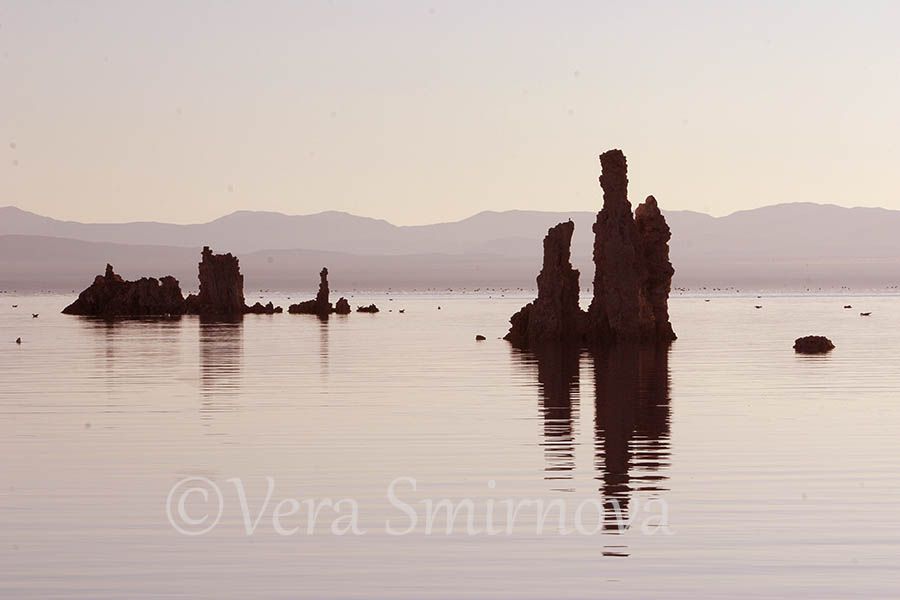
On our first road trip to the Eastern Sierra, we descended from the mountain range in the late afternoon. The initial plan was to set up a camping spot, rest well and head out to the lake the following day. Reality, however, often diverges from even the best of plans: since we were to drive almost past the lake shore, our curiosity ended up taking over. Plus, we always knew: it was our fate to set up the tent in the darkness with only flashlights and maybe some moonlight if we are lucky. So down to the lake we went. And just in time, too: despite there being some half an hour left before official sunset, the sun actually was floating down pretty fast, quickly hiding beneath the mountain tops to the west of the lake. The lake waters went very still. No wind, no rustling of dry grass, not even the chirping of birds. Only small black bats were frantically scrambling in the orange-red sky. And in this unbelievable silence we witnessed a feast of colors, the triumph of flaming skies shrouded in the smoke of clouds. At this moment it was very difficult to believe that we were still on Earth. Since that time we have watched at least a dozen Mono sunsets over the course of several years, and every time it was a unique and unbelievable experience.

I looked at the pictures of the sunrise over the lake, remembering how I creeped out of the tent just before dawn, as quiet as possible, trying not to wake up the kids and attempting to not trip over my husband's hiking boots in the darkness of the early morning... I remembered driving the car to the lake, toward the turquoise green sky that promised another hot day in the Sierras: past the ancient volcano crater, down to the lake. Setting up a tripod, waiting for the sun to rise. Being one-on-one with the Universe, watching the birth of a new day.
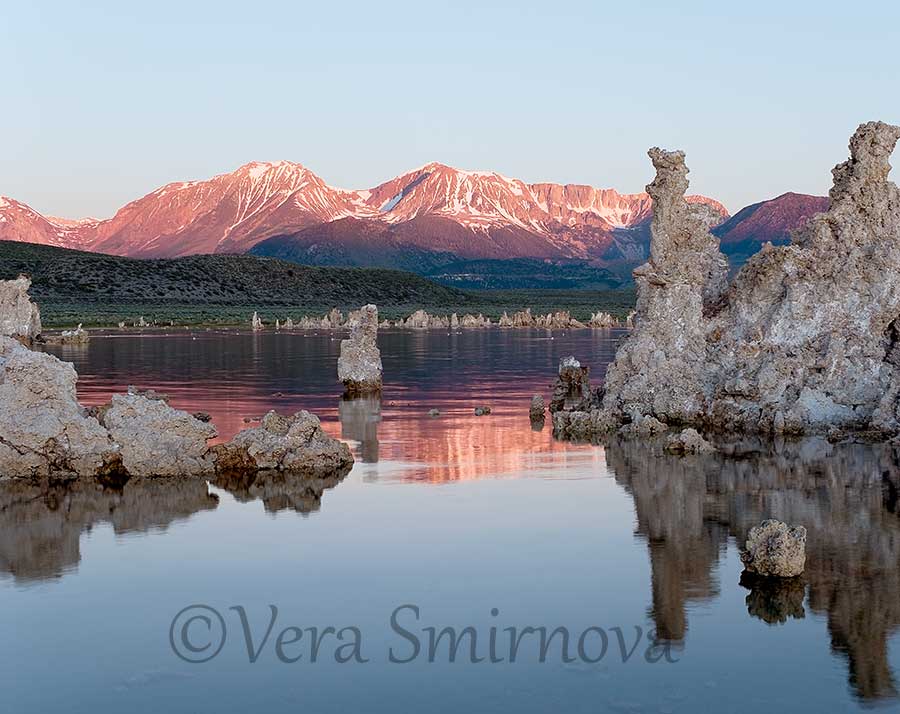
Another way to explore the lake is through kayaking. One could rent a kayak or bring their own, as we did. Gliding over the thick, salty, soapy waters will take you to the far corners of the lake, to the other sides of the tufa towers, giving you another perspective on the tufa towers and surrounding mountains mirroring themselves in the liquid silver surface of the lake.

Visiting the Mono Lake area feels like stepping back in time. The Mono Basin was formed around 760,000 years ago when a huge volcano erupted, spewing enormous amounts of soil and ashes into the sky and forming a big depression in the land, which soon filled up with water. This area is still considered to be active, with the last few eruptions having occurred in the 1700s, 1800s and 1978. The lake is situated 2000 m above sea level, and is about 40 km in diameter.
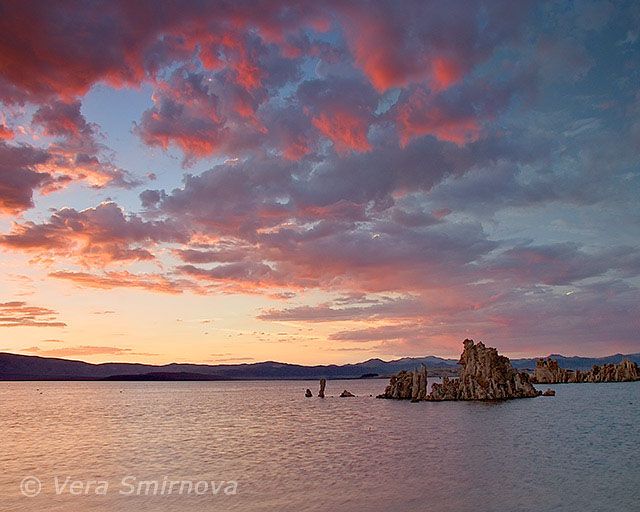
People oftentimes ask whether the water is salty because it was connected to the ocean once. But no, its salinity (which, by the way, is almost three times higher than the ocean’s!) owes itself to a few factors: the lake has no outlet, there are many underwater springs adding dissolved mineral salts, and all the volcanic eruptions added a lot of alkaline ashes to the lake over time. Due to that high salinity and alkalinity, there are no fish in the lake. They wouldn't like to swim in those bitter-tasting soapy waters.
But of course, there is no place on Earth without life! In Mono Lake live tiny "brine shrimps" and alkaline flies. And as unbelievable as it is, the alkali fly pupae, which live in the shallow waters around the edge of the lake, were a significant source of food for the native people of the Mono Basin, who called themselves Kutzadika'a: fly eaters. The pupae are rich in much-needed protein, so Kutzadika'a people would collect them, dry them, and shell them, creating a supply of tiny, yellowish, grain-like kernels that store very well. The pupae kernels were also a subject of trade with other tribes.
You cannot discuss Mono Lake, of course, without mentioning the tufa towers. Yes, those bizarrely shaped towers which rise from the water and add all the more mystery to the landscape, or rather, waterscape. Some groups of tufa look like a gnome family marching toward the mountains, some seem to imitate ancient castles: just let your imagination fly free!

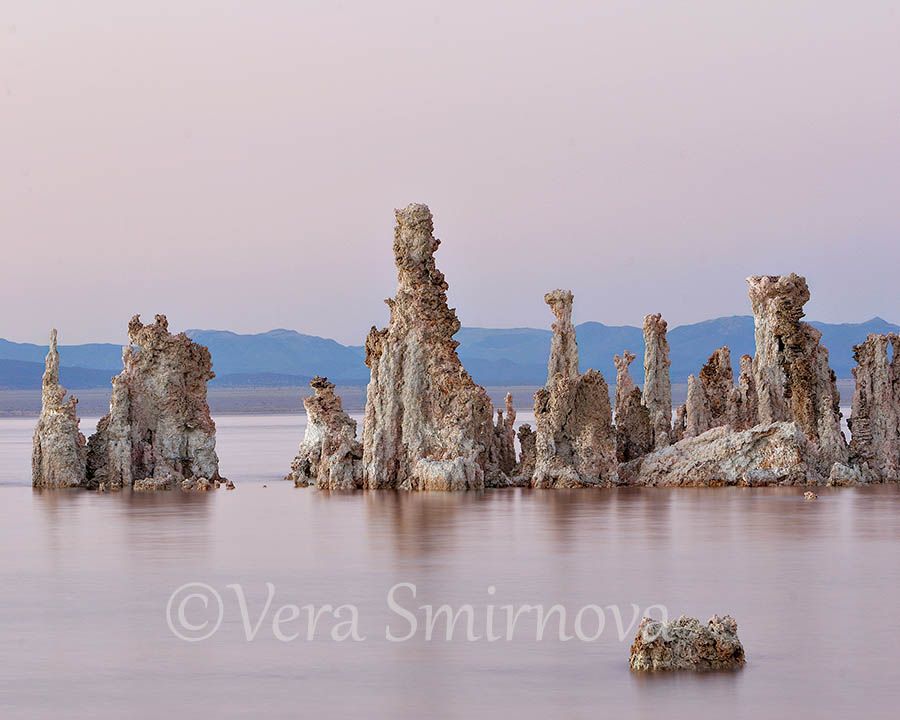
Their origin is no secret, just simple chemistry. Underwater springs bring dissolved calcium salts in contact with the lake's highly alkaline, carbonate-rich water, which leads to the creation of a solid compound which we all know as limestone.
But how is it that we can see them well above the water? For a long time, tufa were hidden under the lake's surface, until in 1941 water from the Mono Basin started to be diverted to Los Angeles, 350 mile south, as a remedy for increased water demand from the fast-growing city. Because of that at some point the lake level dropped a whopping 40 feet and its ecosystem was affected very poorly. The lake lost nearly half its volume… The Mono Lake Committee is working now on drawing the officials’ attention to the problem, and there is a small hope that water level could rise again. It will hide the tufas from our sight, but will be very helpful to the bird species which nest in the area. But it doesn't seem to be happening anytime soon...
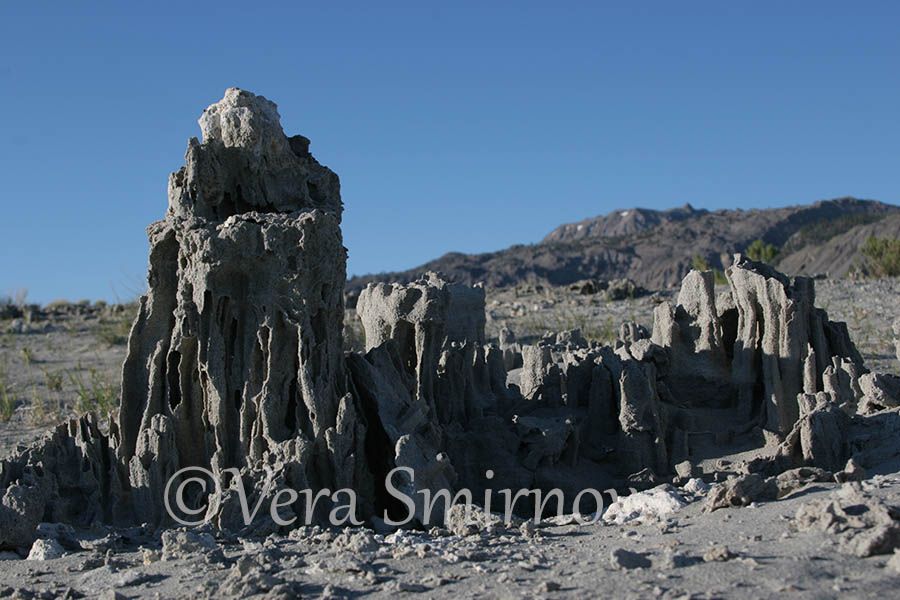
So go ahead, drive to Mono lake, watch the sunrise and sunset, ride the kayaks, hike around the volcanic crater, watch the birds and bats and take lots of pictures!

You can either stay in a motel in the small town of Lee Vining very close to the lake shore, or camp on the nearby June Lake: this one is good for swimming and fishing.

